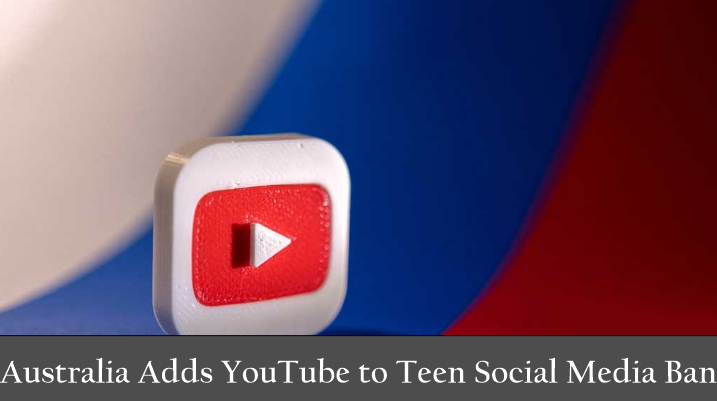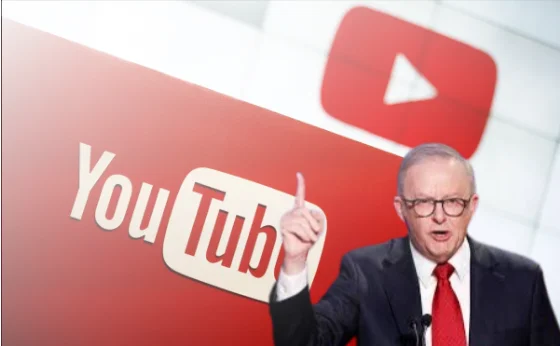Australia Adds YouTube to Teen Social Media Ban, citing harmful content risks and child safety concerns; new rules take effect by December 2025.
Australia has expanded its upcoming social media restrictions for minors by including YouTube in a broader ban set to take effect by December 2025. The reversal of YouTube’s previous exemption comes after fresh concerns about harmful content exposure and child online safety, making Australia the first country globally to enact such sweeping controls. This legislative shift reclassifies YouTube as part of the broader social media ecosystem targeted by the federal government’s child protection framework. The move is expected to intensify scrutiny from tech companies, especially Alphabet Inc., the parent company of YouTube, and may have global policy implications.
Government Reverses Course: YouTube No Longer Exempt from Teen Social Media Ban
On Wednesday, Australian Prime Minister Anthony Albanese confirmed the government’s decision to include YouTube in its social media ban for individuals under the age of 16. The initial exemption for YouTube, granted in 2023 due to its educational value and widespread use among teachers, was overturned following new data indicating significant risks to minors. “I’m calling time on it,” said Prime Minister Albanese. “I want Australian parents to know that we have their backs.” The Australian Communications and Media Authority (ACMA) had advised the government last month to reconsider YouTube’s exemption. A national survey conducted by the eSafety Commissioner revealed that 37% of minors reported encountering harmful or disturbing content on YouTube—higher than any other platform included in the study. The findings prompted a complete reassessment of platform classification and safety policies.
Australia Adds YouTube to Teen Social Media Ban as Poll Findings Prompt Shift
The decision to revoke YouTube’s exemption follows mounting evidence highlighting the platform’s role in exposing minors to inappropriate content. The survey commissioned by the Office of the eSafety Commissioner underscored how YouTube’s algorithmic recommendations frequently led users toward content involving misinformation, explicit material, or content promoting harmful behaviors. This new data directly influenced the government’s approach. Platforms now included in the ban—such as Meta’s Facebook and Instagram, TikTok, Snapchat, and YouTube—will face strict enforcement measures for non-compliance. Additional concerns include the role of AI in generating misleading or manipulative content, further increasing exposure risk for young users.
Legal Framework and Implications of the Ban
Under the new regulation passed in November 2024, social media platforms must take “reasonable steps” to prevent users under 16 from creating or maintaining accounts. Failure to comply may result in fines up to A$49.5 million (approximately USD $33 million). The law applies to all covered platforms operating within Australia’s jurisdiction, including those run by international tech firms. While the law permits minors to view content in passive mode—such as watching YouTube videos without being signed into an account—interactive functions such as uploading content, commenting, subscribing, or receiving personalized video recommendations will be disabled for users under 16. This step is intended to reduce engagement with potentially addictive or harmful content while preserving access to curated educational material in schools or at home under adult supervision.
Industry Pushback: YouTube Denies Social Media Classification
In response to the decision, a YouTube spokesperson reiterated that the platform does not consider itself a social media service. “Our position remains clear: YouTube is a video sharing platform with a library of free, high-quality content, increasingly viewed on TV screens. It’s not social media,” the company stated in an official email. YouTube has argued that it should not fall under the same regulatory category as TikTok or Instagram, citing its predominant use for video consumption rather than real-time communication or social networking. However, critics—including competing platforms—point out that YouTube includes features like user interaction, algorithmic content delivery, and comment threads, which are hallmarks of social media. Experts also cite its recommendation system, which mirrors those used by traditional social media platforms in terms of behavioral profiling.
Educators and Experts Support the Policy
Despite initial concerns about limiting access to educational content, the move has gained backing from several educational and child advocacy groups. Angela Falkenberg, President of the Australian Primary Principals Association, emphasized that teachers would continue to curate age-appropriate content. “Teachers are always curators of any resource for appropriateness (and) will be judicious,” she said, expressing confidence in educators’ ability to navigate the new restrictions. Cybersecurity experts also endorsed the ban. Adam Marre, Chief Information Security Officer at Arctic Wolf, remarked, “Artificial intelligence has supercharged the spread of misinformation on social media platforms such as YouTube. The Australian government’s move to regulate YouTube is an important step in pushing back against the unchecked power of big tech and protecting kids.” The Australian Council on Children and the Media also welcomed the decision, citing mounting psychological studies linking excessive digital engagement to mental health issues among teenagers.
Alphabet’s History of Conflict with Australian Lawmakers
This isn’t the first time Alphabet Inc. has faced regulatory challenges in Australia. In 2021, the tech giant threatened to withdraw Google Search services from the country in protest of the News Media Bargaining Code, a law that forced the platform to compensate publishers for content indexed on its platform. A similar standoff may now emerge. Although YouTube has not officially confirmed any legal challenge, Australian media have reported that the company is weighing options that may include court proceedings. Last week, YouTube stated it had contacted the government to “uphold the integrity of the legislative process.” However, Australian officials remain firm. “I will not be intimidated by legal threats when this is a genuine fight for the well-being of Australian kids,” Communications Minister Anika Wells stated in Parliament. Legal scholars have noted that even if challenged, the law has a strong basis under Australia’s cyber and child protection laws.
Upcoming Age-Verification Technologies Under Evaluation
The government’s enforcement strategy depends heavily on age-verification mechanisms, which are still under review. A report on available tools and technologies is expected by the end of July. These systems must strike a balance between effectiveness and user privacy. Potential solutions under consideration include AI-driven facial recognition, digital ID verification, and behavioral analysis tools. The final framework will determine how platforms implement the new age restrictions without violating data protection laws or user anonymity rights. Officials have stressed that enforcement will be gradual, prioritizing platforms that fail to show compliance efforts. Pilot programs may launch in Q4 of 2025 to test technology readiness and privacy resilience.

Global Implications of Australia’s Teen Social Media Ban
Australia’s regulatory approach is being closely watched by other countries considering similar restrictions. As digital platforms face increasing scrutiny over child safety, Australia’s model could serve as a legislative template for future internet safety policies. Lawmakers from the UK, Canada, and parts of the EU have already expressed interest in the Australian approach, especially given its legal structure that balances platform liability and parental rights. The ban’s inclusion of a globally dominant platform like YouTube marks a significant escalation. Analysts believe this may compel other tech firms to revisit their child safety protocols preemptively to avoid similar legislation in other jurisdictions. Furthermore, digital rights organizations are pressing for the creation of global standards for youth protection online, using Australia’s policy as a reference case.
Conclusion; Australia Adds YouTube to Teen Social Media Ban
The Australian government’s inclusion of YouTube in its teen social media ban signals a turning point in digital regulation. Driven by data and a commitment to safeguarding minors, the policy aligns with broader efforts to hold tech platforms accountable for their impact on young users. As enforcement mechanisms are finalized and potential legal disputes unfold, the balance between child protection, platform freedom, and educational accessibility will remain at the center of this ongoing policy debate. Australia’s proactive stance could shape the global conversation on regulating digital environments for younger audiences.

